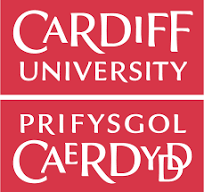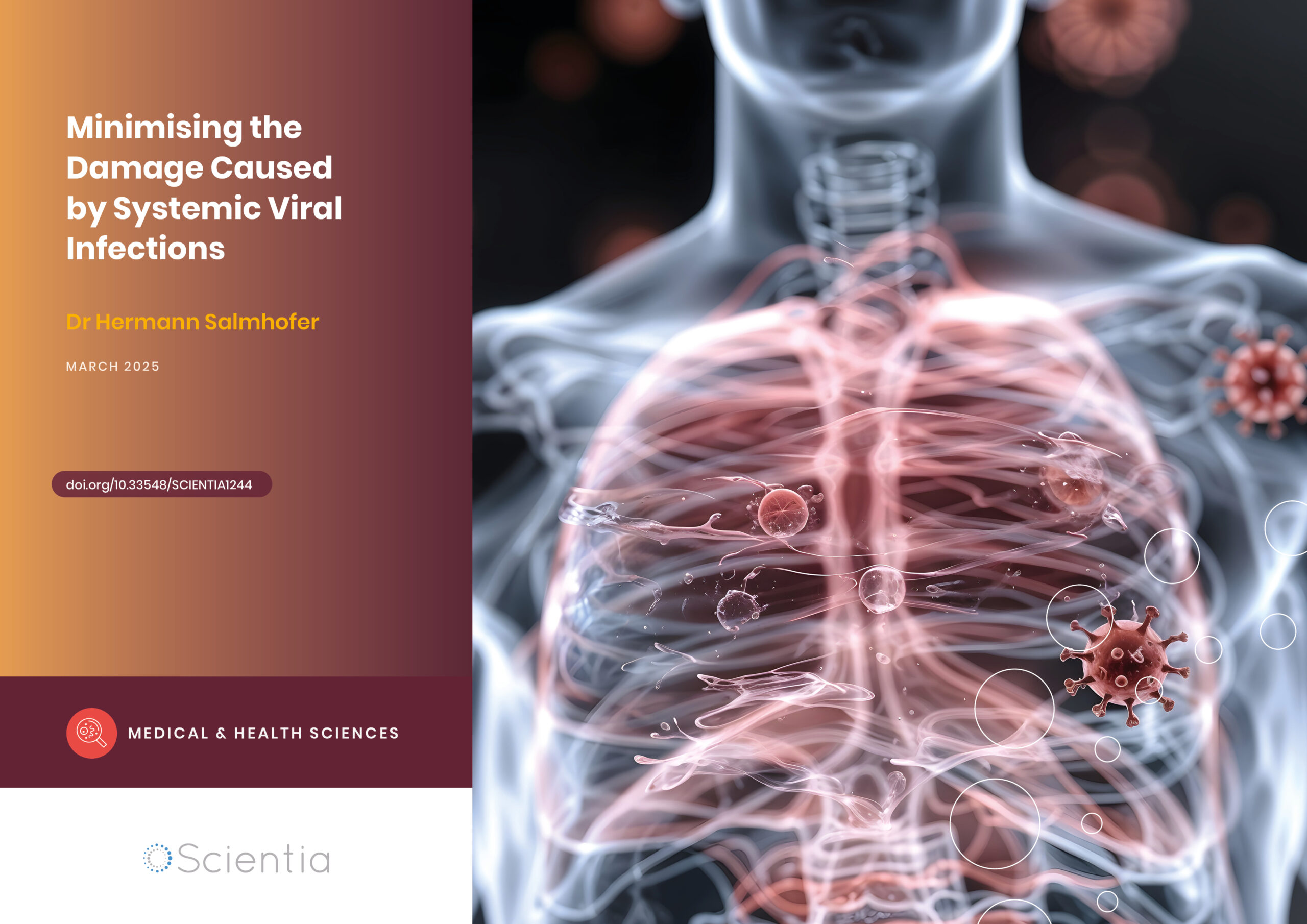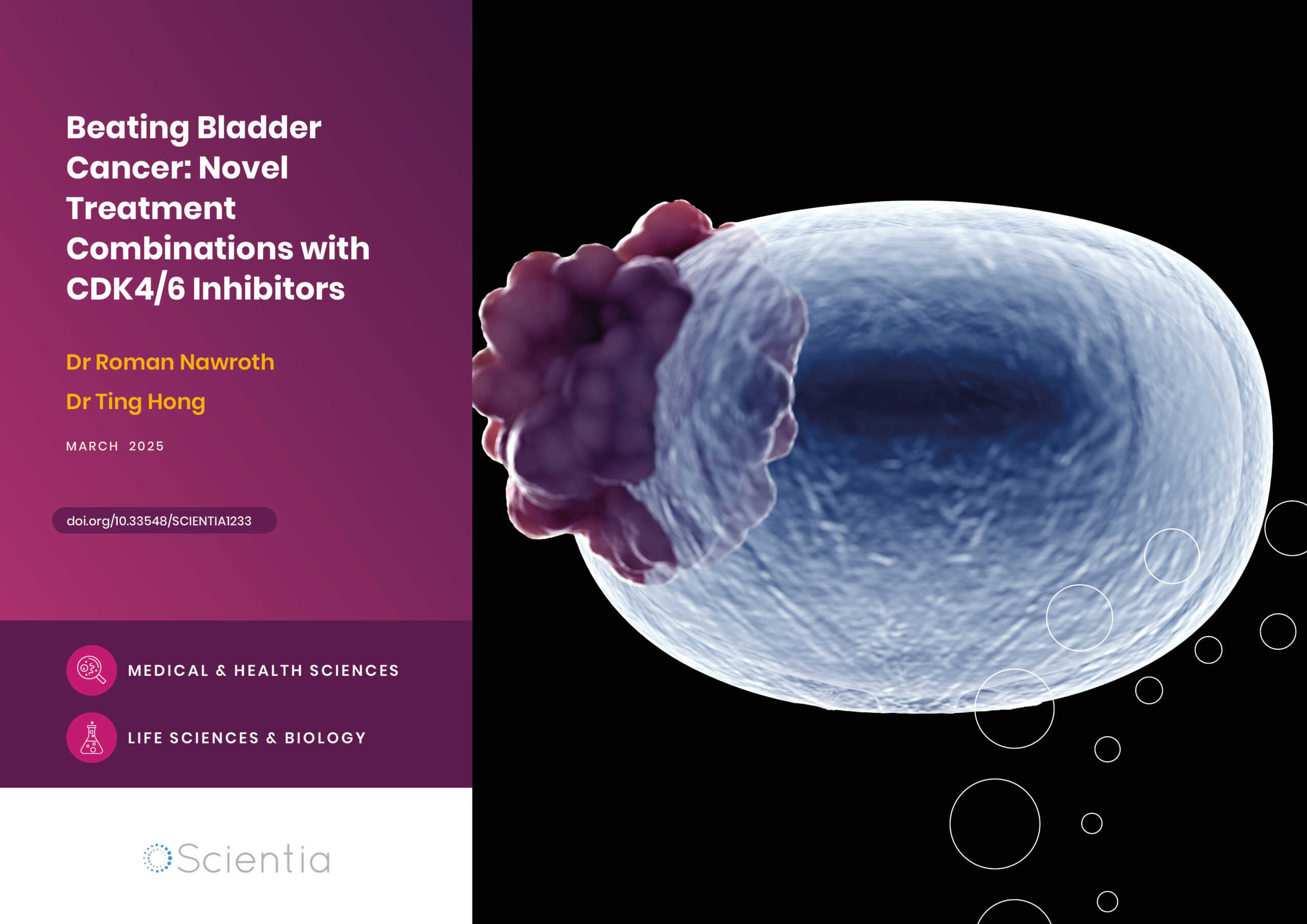Dr Toby Phesse | Revealing the Mysteries of Wnt Signalling: Novel Approaches to Beating Cancer
Cancer remains a leading cause of mortality worldwide, and the need for new, more effective treatments remains an urgent challenge. Dr Toby Phesse from Cardiff University in the UK focuses on the role of the Wnt receptor found on the surface of cells and its involvement with cell communication and cancer growth, bringing fresh hopes for new therapeutic options.
The Battle Against Cancer
Cancer stands amongst the primary contributors to mortality. The World Health Organization states that approximately one in six deaths, totalling around 10 million globally in 2020, were attributed to cancer. Despite its singular label, the word ‘cancer’ serves as an overarching term for a diverse group of diseases impacting various body parts. Generally, it’s characterised by rapid and uncontrolled growth, as cancer cells surpass normal boundaries and can spread to other regions. Treatment options vary depending on the cancer’s location and how far it has progressed at diagnosis.
Understanding the differences between how cancer and healthy cells communicate and interact with their environment is vital to finding new therapeutic approaches. Dr Toby Phesse conducts his research in the European Cancer Stem Cell Research Institute at Cardiff University, UK. He explores how cell communication, known as cell signalling, regulates cancers, stem cells and regeneration, with a focus on a particular cell receptor known as Frizzled (Fzd).
Frizzy-haired Fruit Flies Join the Fight
Dr Phesse’s earlier research focused on the gene called Fzd7. It was first discovered in fruit flies, and scientists found that mutations to the gene resulted in fruit flies with frizzy hairs – hence the name. Along with some other interestingly named genes linked to appearance (including dishevelled, fuzzy and multiple wing hairs), these genes are all linked to the same signalling pathway called Wnt, which is essential for embryos to develop normally.
The Frizzled (Fzd) genes have been discovered in a wide range of organisms, including humans. Human Frizzled7 (Fzd7) was first identified in the late 1990s and, most interestingly, was found to show increased levels of activity (or upregulation) in certain types of cancers.
Dr Phesse explains that Fzd7 is probably the most studied member of the Frizzled gene family and acts as a receptor for Wnt ligands (signals). In general terms, there are many different types of receptors on cell surfaces, and once a ligand (a molecule that binds reversibly to a protein, such as a receptor) interacts with a receptor, this can set off a complex chain reaction of events within the cell. The outcome of such an event very much depends on the ligand and receptor involved, and Dr Phesse specifically investigates how Wnt signalling is transmitted to regulate the activity of stem cells and cancer cells.

Basic RGB
Frizzled7 and Tumours
Fzd7 transmits Wnt signalling via several different pathways using a variety of ligands and includes the involvement of co-receptors or secondary receptors, which help facilitate the process. Dr Phesse and his key collaborator at Melbourne University, Professor Vincan, identified that Fzd7 was critical for the function of stem cells in the intestine and the ability of the intestine to regenerate after damage.
However, there is another side to the Fzd7 story. Most notably, there is a growing mountain of evidence that identifies the upregulation of Fzd7 in a large number of different types of human cancers. Fzd7 also regulates the progression and invasion of cancerous cells in the body, organising the cellular changes and interaction with the metastatic niche that underscores metastasis (the spread of cancer cells). Thus, being able to target Fzd7 therapeutically could hold huge implications in terms of new cancer treatment options.
Targeting Gastric Cancer
According to the World Health Organization, there were around 1.1 million new cases of gastric (stomach) cancer in 2020, and an estimated 770,000 deaths were attributed to it in the same year. Wnt signalling is deregulated at a number of different points in the signalling pathway in gastric cancer cells, including the receptor, ligands, and components within the cells.
Dr Phesse and collaborator Professor Elizabeth Vincan highlighted the Wnt receptor Fzd7 as a promising target for the treatment of gastric cancer. The team noted that the presence of a particular protein called nuclear β-catenin was a hallmark of Wnt signalling activity – seen in around 30% of human stomach tumours. Genetic deletion of Fzd7 was able to dramatically reduce the initiation and growth of gastric tumours, indicating Fzd7 as an attractive target for cancer therapy. Interestingly, deletion of Fzd7 was able to inhibit the growth of gastric tumours even with additional types of mutations to the adenomatous polyposis coli (Apc) gene, which was thought to be counterintuitive according to the models of cell signalling. This suggests that patients with Apc mutations may also benefit from a therapy targeting Fzd7.
Dr Phesse and his colleagues also investigated pharmacological inhibition of the Wnt receptors in gastric cancer cells, using a pharmaceutical agent to block the Wnt receptors, which further supported the therapeutic approach to target Fzd7.
Novel Treatments on the Horizon
Dr Phesse emphasises that there is substantial evidence pointing toward the Wnt signalling pathway as being an attractive treatment target for blocking not only tumour growth but potentially the metastatic process, in which the cancer spreads to other areas of the body. In the team’s paper on gastric cancers and Wnt, they showed that treatment with vantictumab, a type of monoclonal antibody, can inhibit the growth of tumours regardless of any mutations to the Apc gene.
The team concluded that this could potentially help patients with gastric cancer, and further studies would help determine the therapeutic potential of using Wnt and Fzd7 as targets for the metastatic disease. Dr Phesse stresses that there is a growing amount of evidence to support Wnt and Fzd7 as a target in this condition and that there are currently clinical trials underway, adding that vantictumab is also being tested in metastatic breast cancer, pancreatic cancer, and non-small cell lung cancer. However, pharmacological targeting of the Wnt pathway has been challenging, with no Wnt inhibitors approved by the FDA for clinical use to date. A recent breakthrough by scientists in California led by Professor Karl Willert has generated a new drug capable of killing cancer cells with high levels of Fzd7, which offers an exciting new potential for targeting Wnt signalling. Indeed, Dr Phesse and Professor Willert are working together to investigate this approach in several cancers, including prostate cancer.

New Hopes for Prostate Cancer
In a recent piece of work, Dr Phesse and his colleagues from the European Cancer Stem Cell Research Institute explored the Wnt pathways as a therapeutic target for treating prostate cancer. This is one of the most common forms of cancer in men, and global prostate cancer deaths exceed 375,000 each year. Patients who are diagnosed earlier with the localised form usually have a better chance of recovery, with over 99% surviving 5 years or more after diagnosis. Dr Phesse reminds us that the outcome is drastically reduced in those with the metastatic form, with less than 30% making it to 5 years post-diagnosis. Clearly, novel approaches for treating this cancer would benefit a huge number of patients.
There are different forms of metastatic prostate cancer, including hormone-sensitive types and forms that are resistant to certain drug treatments. Dr Phesse and his collaborator, Dr Helen Pearson, were one of the first groups to demonstrate that deregulated Wnt signalling was able to initiate and drive prostate cancer progression. Since then, large-scale analysis of prostate tumours supports these initial findings and also highlights that the Wnt receptor Fzd7 is upregulated in prostate cancer, too.
Dr Phesse highlights some recent discoveries that indicate targeting the Wnt pathway may prove to be a beneficial treatment for prostate cancer, which his group are now investigating with recent major funding from Prostate Cancer Research. This work will aim to understand how Wnt signalling and Fzd7 are regulating the spread of prostate cancer, and determine if targeting Wnt signalling can prevent metastatic prostate cancer. They will also identify what happens to a cancer cell when it arrives at the site of metastasis and how Wnt signalling regulates these activities.
A Bright Future Targeting Wnt and Fzd7
Dr Phesse’s review of prostate cancer shines light on multiple avenues for future research. The team outlines the types of alterations to the genes that can occur in prostate cancer, which can lead to Wnt signalling activity, and highlights the range of laboratory models that have been used to study Wnt and prostate cancer. They also offer new insights into how the Wnt signalling cascade can facilitate the development of drug resistance, growth and metastasis of prostate cancer.
Dr Phesse proposes that as Wnt signalling is deregulated in so many different types of cancers, it is challenging to understand the complex, interweaving cascade of reactions within the cells. Nonetheless, the rewards for being able to target it successfully would be immense, as this pathway is active in many types of cancer. With the exciting new breakthrough of the Fzd7-specific drug, Dr Phesse and his colleagues will continue to work to determine the therapeutic benefit of targeting Fzd7. In the near future, there could be a Wnt inhibitor available for clinical use to improve the health of cancer patients.
SHARE
DOWNLOAD E-BOOK
REFERENCE
https://doi.org/10.33548/SCIENTIA1044
MEET THE RESEARCHER

Dr Toby J Phesse
Cell Signalling and Cancer Laboratory
The European Cancer Stem Cell Research Institute
Cardiff University
Wales
UK
Dr Toby Phesse obtained his BSc in Cell Biology from the University of Portsmouth and PhD in Biology from Warwick University, where he investigated cell signalling during embryonic development. He went on to complete a postdoctoral position, researching Wnt signalling and cancer, at Cardiff University in 2004, and in 2008, he became a Senior Postdoctoral Fellow at The Ludwig Institute of Cancer Research in Melbourne, Australia and later, at the Walter and Eliza Hall Institute of Medical Research. He was appointed lab head at Melbourne University in 2016 and also secured a fellowship at Cardiff University, where he progressed to his current position of Senior Lecturer at the European Cancer Stem Cell Research Institute. Dr Phesse also holds an ongoing position at the University of Melbourne as an Honorary Senior Fellow. His current research investigates how cell signalling regulates cancer biology, stem cells and regeneration, with a focus on Wnt signalling.
CONTACT
E: phesset@cardiff.ac.uk
W: https://profiles.cardiff.ac.uk/staff/phesset
KEY COLLABORATORS
Professor Elizabeth Vincan, Melbourne University
Dr Helen Pearson, Cardiff University
Professor Owen Sansom, CRUK Scotland Institute
Professor Karl Willert, University of California, San Diego
Professor Alan Parker, Cardiff University
FUNDING
Prostate Cancer Research, UK
Medical Research Council, UK
National Health and Medical Research Council, Australia
Wellcome Trust, UK
FURTHER READING
S Koushyar, VS Meniel, TJ Phesse, et al., Exploring the Wnt Pathway as a Therapeutic Target for Prostate Cancer, Biomolecules, 2022, 12, 309. DOI: 10.3390/biom12020309
DJ Flanagan, E Vincan, TJ Phesse, Wnt Signaling in Cancer: Not a Binary ON:OFF Switch, Cancer Research, 2019, 79, 5901-6. DOI: 10.1158/0008-5472.CAN-19-1362
TJ Phesse, DJ Flanagan, E Vincan, Frizzled7: A Promising Achilles’ Heel for Targeting the Wnt Receptor Complex to Treat Cancer, 2016, Cancers, 8(5), 50. DOI: 10.3390/cancers8050050

REPUBLISH OUR ARTICLES
We encourage all formats of sharing and republishing of our articles. Whether you want to host on your website, publication or blog, we welcome this. Find out more
Creative Commons Licence (CC BY 4.0)
This work is licensed under a Creative Commons Attribution 4.0 International License. 
What does this mean?
Share: You can copy and redistribute the material in any medium or format
Adapt: You can change, and build upon the material for any purpose, even commercially.
Credit: You must give appropriate credit, provide a link to the license, and indicate if changes were made.
SUBSCRIBE NOW
Follow Us
MORE ARTICLES YOU MAY LIKE
Professor James Calvin | Innovation in Heart Failure Care: Comparing Personal Coaching with Digital Support
Heart failure remains one of the most challenging conditions facing healthcare systems today, with hundreds of thousands of new cases diagnosed annually. Professor James Calvin from Western University’s Schulich School of Medicine and Dentistry has led groundbreaking research comparing two innovative approaches to supporting patients: personal health coaches and smartphone reminders. His team’s findings suggest that combining human support with digital technology could transform how we help patients manage this complex condition.
Dr Hermann Salmhofer | Minimising the Damage Caused by Systemic Viral Infections
The mechanisms via which viral diseases infect and progress within the human body have become the subject of intense scrutiny since the emergence of the serious respiratory condition COVID-19, although many other viruses remain woefully under-researched. Recently, Dr Hermann Salmhofer and colleagues at the Paracelsus Medical University in Salzburg, Austria, have described the successful treatment of a harmful systemic virus affecting the kidneys, and suggest a possible new treatment target to mitigate the progression of the disease and prevent the development of permanent organ damage. Their findings, combined with broader research on viral infections, highlight the critical importance of both preventive measures and targeted treatments in managing viral diseases.
Revealing the Intricate Links Between Metabolism and Reproduction
The brain plays a vital role in controlling reproductive functions. It helps to maintain a delicate balance of hormones, all of which can be affected by the metabolism. Investigating the impact of the metabolism on reproductive development and function is critical to a better understanding of health and diseases. Professor Carol Fuzeti Elias and Dr Cristina Sáenz de Miera Patín from the University of Michigan in the USA, carry out groundbreaking research in neuroscience, exploring the molecular and neural mechanisms at play.
Beating Bladder Cancer: Novel Treatment Combinations with CDK4/6 Inhibitors
Cancer is one of the leading causes of death around the world. Research into this disease is vital to the development of new treatments, bringing fresh hopes to those affected by this potentially devastating diagnosis. Dr Roman Nawroth and Dr Ting Hong carry out their ground-breaking research at the Technical University of Munich in Germany. They focus their efforts on novel approaches to fight bladder cancer, exploring the use of CDK4/6 inhibitors.





